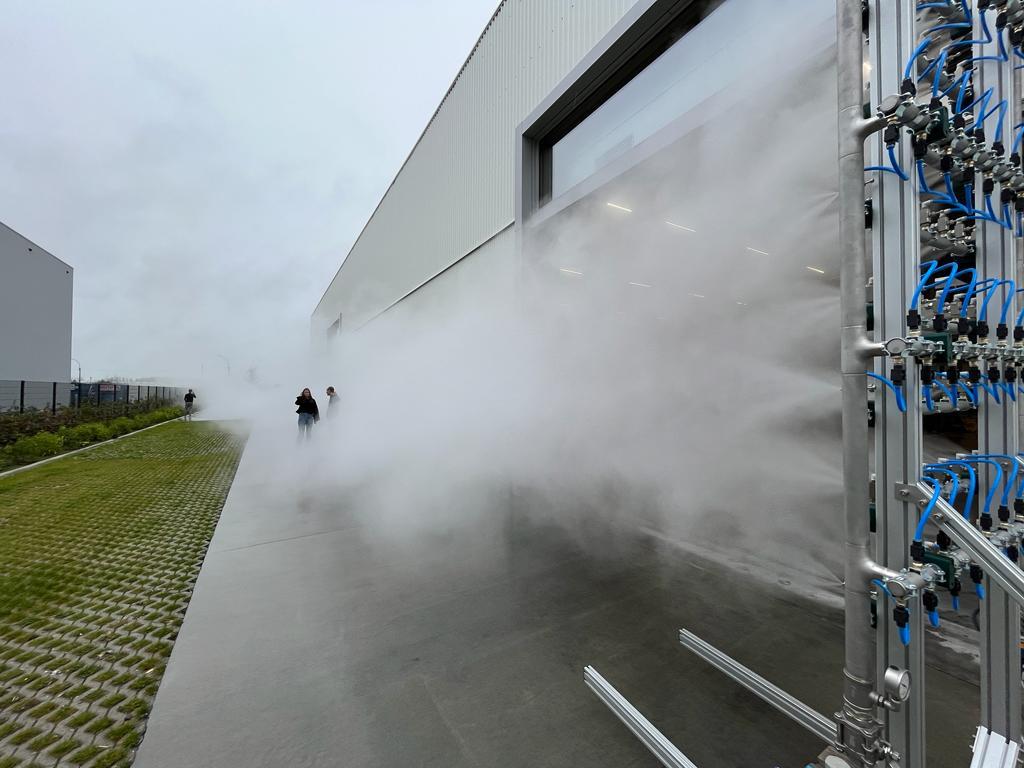November 2023
Schiphol will conduct two pilots to reduce ultrafine particles on the apron. These particles are released by aircraft and diesel engines. The airport will be testing an innovative installation to filter the air in indoor areas adjacent to the runways, while also exploring the possibility of using the system outdoors. Together with partners from the TULIPS consortium, Schiphol is also advancing research into the use of mist to remove ultrafine particles from the air.
We want to provide employees with a healthy workplace and improve quality of life in the areas adjacent to the airport. That’s why we’re committed to reducing the concentration of ultrafine particles at Schiphol. We’re working hard to make that happen, for example by making Schiphol emission-free in the coming years. We’ve changed our departure procedures at two gates and are conducting a number of studies. But we’re also thinking outside the box, doing experimental research and looking at promising solutions used in other sectors.
Patricia Vitalis, Director of Airport Operations & Aviation Partnerships at Royal Schiphol Group
Air filtration pilot
This autumn, Schiphol conducted its first air filtration pilot using a system developed by Van Wees Innovations. The device, which creates airflows that cause ultrafine particles to clump together and form larger particles that can be filtered, was successfully tested at a fire station near the runways. With the use of the device, there were on average 75% less ultrafine particles present in the air at the fire station.
Reduction of average 75%
The device itself cleans the air almost completely. Because the building is lived in 24 hours a day and windows and doors are opened for example, the reduction during the trial came to an average of 75%. Because of the positive results and to gain more knowledge, the airport is taking the device into longer use at the fire station.
Next steps
Schiphol is one of the first organisations to test this innovative air filtration system. The airport wants to conduct similar pilots in other buildings adjacent to the take-off and landing area to increase its knowledge and further explore the solution’s significant potential. At the moment, the technology behind the device is still in its infancy, with no proven track record in aviation. Schiphol is also exploring the possibility of using air filtration at the research lab on the Pier D apron and testing whether the device is equally as effective outdoors.

Using water drops to remove ultrafine particles from the air
Together with the Royal Netherlands Aerospace Centre (NLR), Schiphol will also be conducting a pilot with water drops at Twente Airport this month. The theory is that the ultrafine particles emitted by aircraft engines will attach to the drops, become heavy and fall to the ground. This would prevent them from spreading through the air and being inhaled.
TULIPS trial with innovative waterscreen
Schiphol previously conducted a pilot on its own premises in 2022. The results showed that while the technique has potential, a scientifically substantiated connection between the use of mist and a reduction in the concentration of particulate matter could not yet be established. Using a research aircraft (NLR and TU Delft’s PH-LAB), the parties are conducting a follow up trial. This will take place at Twente Airport, a location where NLR frequently conducts research due to the favourable conditions of the airport. For the trial, the device that disperses water droplets has been further developed and more specialised measuring equipment is being used. If this new pilot is successful, the next step is to test the technology’s effectiveness on a larger scale.

For more information on ultrafine particles at Schiphol and measures taken check out our previous article on the research lab or the Schiphol website
